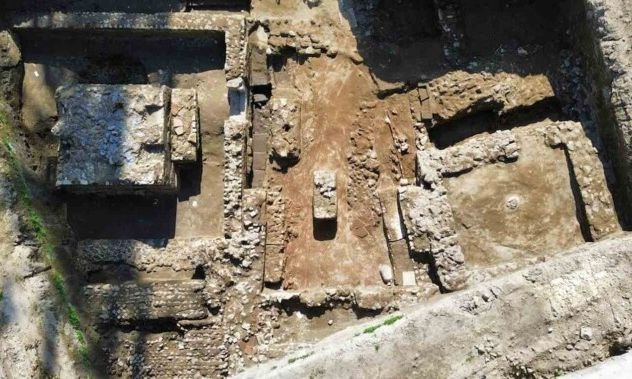An important ancient mausoleum featuring a gladiator inscription has been discovered in Italy, shedding new light on the rich history of the region.
Aerial photography of the excavation site in Italy, Metropolitan Archaeology Supervision of the Naples Area.
A noteworthy necropolis has been unearthed in southern Italy, specifically in the Campania region. Excavations at the well-known Roman colony of Liternum revealed this necropolis, which includes the tomb of a gladiator, complete with an inscription dedicated to him.
The mausoleum with the inscription is located in the present-day municipality of Giuliano in Campania. The site dates back to the first century BC and was used as a final resting place for prominent gladiators.
According to a statement from the Archaeological Supervision of the Metropolitan Area of Naples, the evaluation of the site and the recovery of coins, lamps, and ceramics has provided new insights into how burial customs evolved throughout the history of the Roman Empire.
The necropolis at Liternum consisted of two burial enclosures, covering a total area of about 450 square meters, surrounded by white and gray boulders with red details.
The deceased were buried in various ways, including urn burials within approximately 20 plastered niches, large ossuaries, and enclosures on the floor sealed with roof tiles.
Among the discoveries were several marble cenotaphs, some of which remained intact, as well as the cenotaph of the gladiator with the corresponding inscription. The latter highlights the value and remembrance of these fighters in Roman society, according to a statement from the Archaeological Supervision.
The cenotaph in the Campania region, Metropolitan Area of Naples Archaeological Supervision.
The cenotaph in the Campania area. Photo credit: Archaeological Supervision of the Metropolitan Area of Naples.
Its presence at Liternum suggests that the city was home to gladiators who, after their glorious careers in the arena, found their resting place there.
"The Giuliano area is experiencing an extraordinary period of discoveries, first with the tomb of Cerberus and now with this necropolis," said Superintendent Mariano Nuccio. "The quality of the structures and their excellent state of preservation enrich our understanding of the history of the Liternum colony and deepen the study of the socio-cultural context of the time."
Excavations are ongoing, and it is likely that more findings will emerge, shedding further light on Liternum’s location along the Via Domitiana, a road that led from Rome to Campania and was known to be lined with tombs.







